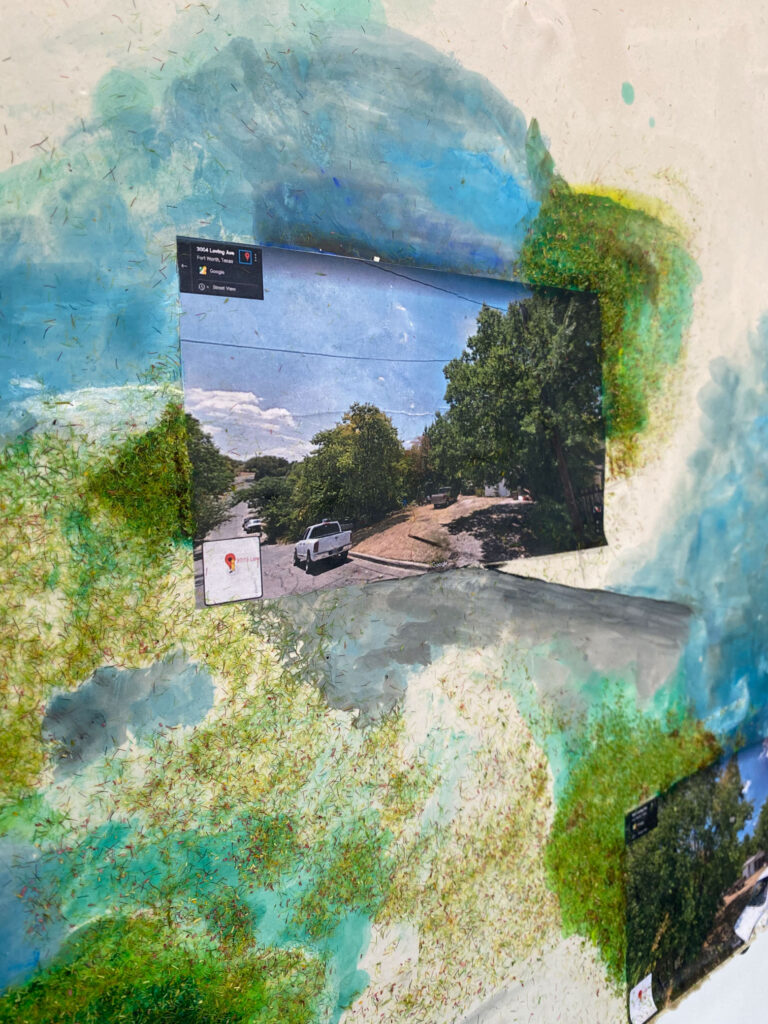
Research for a Fictional Documentary
ID:I Galleri presenterar Research for a Fictional Documentary
med Lovie Peoples inbjuden av Hillside Projects
8/4-24/4
VERNISSAGE fredag 8.4 kl. 17 – 20
KULTURNATTEN 23.4 kl. 12 – sent
Öppettider:
tor – fre 12 – 18
lör – sön 12 – 16
Stängt under påsk 14.3-17.3
We are happy to invite Lovie Peoples to exhibit at ID:I galleri. For many years, People’s practice has centered around the history of her paternal great great grandmother Lucinda Barring. The only factual information found about Lucinda is a death certificate dated 4 July 1965 and that she worked as a launderer until her death. Given the lack of state records from African Americans in the Southern United States of this time, it has been impossible to find facts beyond this point. Lucinda’s birth year was one year before slavery was abolished in the US. Lucinda’s story, or lack of it, continues to inspire Peoples’ to explore the power of portrayal. Who do we remember as a subject, and who do we remember as an object through the stories we can tell? How is the portrayal of one’s being or “not being” and the spaces in between felt in the social fabric of today?
Peoples’ most recent works, presented here at ID:I Galleri, include materials such as plaster, copper pipes, glass, soundproofing mats, and video. Several ponytails cast in glass hang in a line on the wall. The hair appears to bounce healthily as if attached to a woman running through a fine neighborhood on her morning run. Physical identity is often wrapped up in hair and hairstyles, where different hair types affect the social value one can create. Placed on the gallery floor are sculptures in copper pipes and plaster referring to materials and architecture of suburban environments, yet here slightly collapsed and awkward in their being.
Passing through a plastic construction sheeting and entering the back room is a video and sculptural works exploring two separate areas in Texas, and the tension that arises in the telling of these areas histories. In the video, Peoples uses Google Maps to navigate through the architecture and landscape of Oak Hill, a middle class suburbia in Austin. Known initially as Oatmanville or Convict Hill, this area was once a site where convicts, or very poor men, were leased to cut limestone for the construction of Texas State Capitol Hill. The work entailed hard labour, where the saying goes that many died while working or trying to flee, and lived lives may now be buried beneath current day villas. In the sculptural works, contemporary images of the deprived area where the men lived are submerged into foamy material. Peoples is interested in the stories, or the lack of stories, about these areas. What happens when there is a distancing of the deprived and their destinies, and a viewing of them as the other. When the stories of their demise create more engagement than did their lives. Which stories are of importance and who takes place in history?
In Peoples work there is fragility in its materiality yet also a frustration and tension, collapsed at times, and pulling in different directions. Both in the sculptural works and when traveling (with Google Maps) through Oak Hill, movements become choreographed and distanced, likened to restrictions that arise in the telling of history, of which stories are told, and why.
-Emily Berry Mennerdahl & Jonas Böttern of Hillside Projects
This text was written on conversations with and texts written by Peoples.
